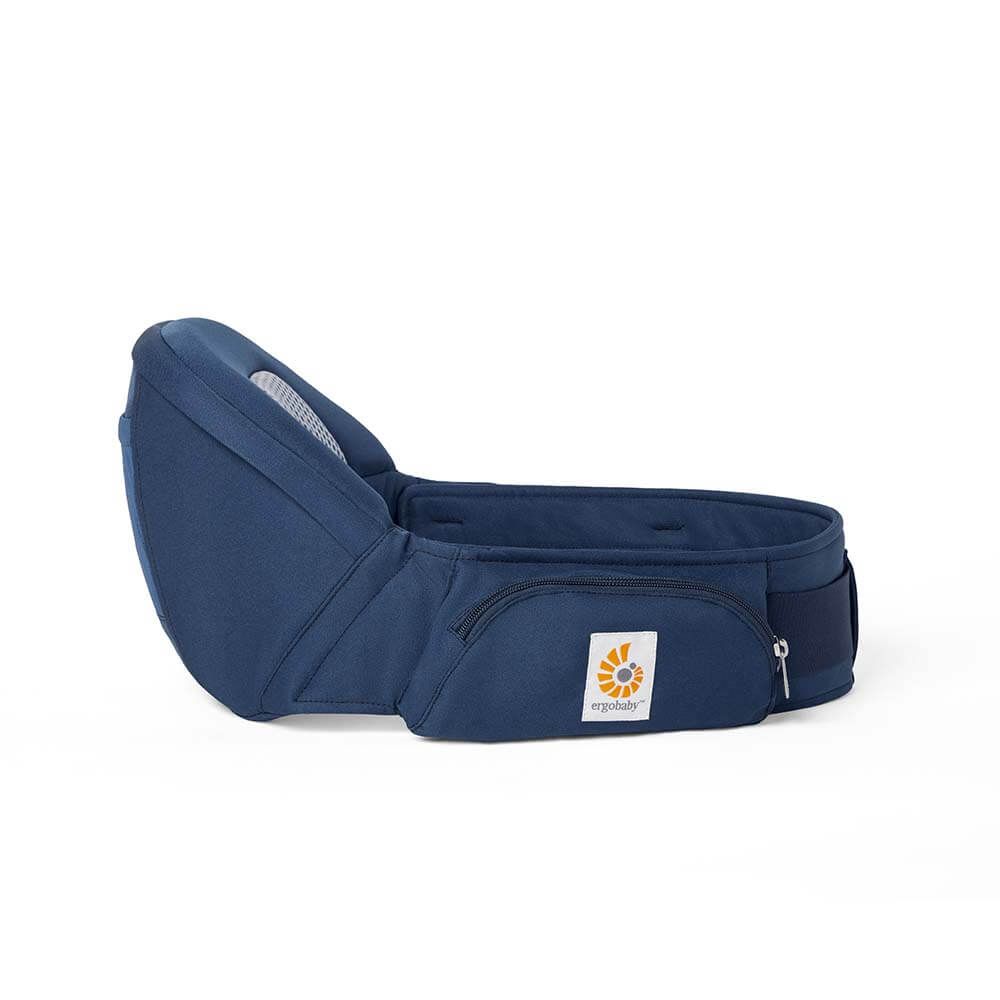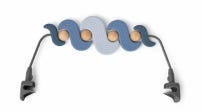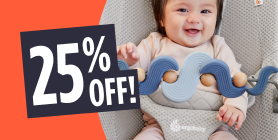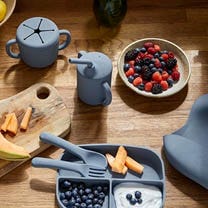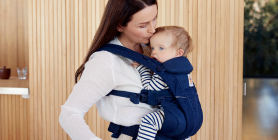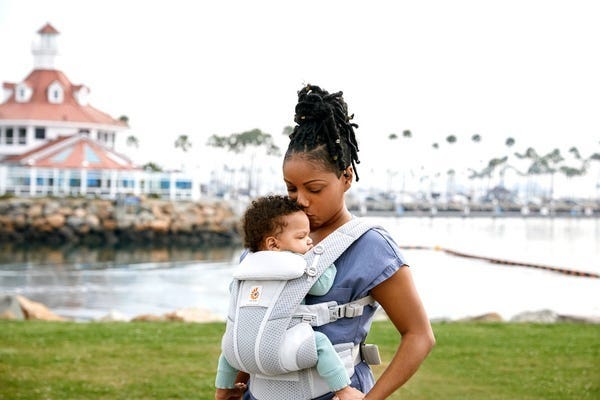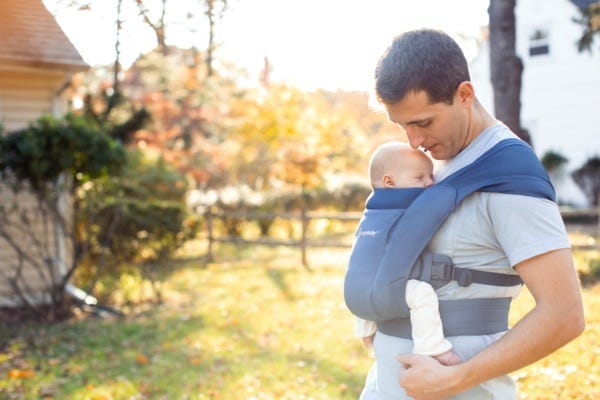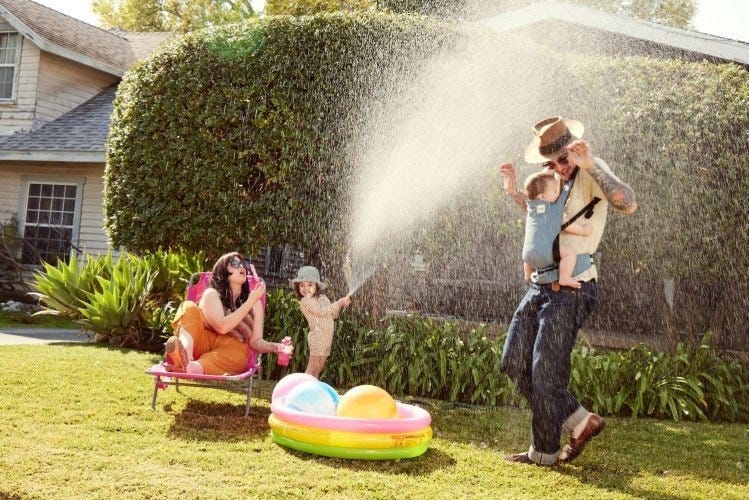Because of the unusually close relationship that exists between a mother and her baby, especially during pregnancy and breast feeding, all efforts to prevent obesity in your baby will have to begin with you, the mother and to a lesser degree with the father as well. This fact presents both a challenge, but also some unique possibilities to shape your baby's appetite, digestion and metabolism and to lay the foundation for your baby's lifelong healthy lifestyle. In this article we will take a look at some general lifestyle recommendations, and we will also discuss some less-known measures and approaches that will help you and your baby stay or become lean. First of all, if there were ever a time where it would be a good idea from a nutritional point of view - to make sure that your food is packed with anti-oxidants and essential fatty acids, the period when you are either pregnant or breastfeeding your baby is that time. And that means lots of fruits and vegetables, nuts, fatty fish, whole grains and possibly omega-3 supplements. The Canadian Government has recognized the importance of DHA omega-3 and permits the following biological claim for DHA: "DHA, an omega-3 fatty acid, supports the normal development of the brain, eyes and nerves. Your baby's brain is growing by leaps and bounds in the first year and you certainly want to make sure that it has the needed bricks and mortar. Be sure to consult your doctor on this issue, because your needs may be covered by the fish you eat, but it depends on what kind of fish you eat. Also consult your doctor on folic acid (B9) vitamin D and iron supplements during pregnancy. In relation to food, you may or may not have considered going for the organic option. When it comes to obesity, science has come up with yet another prompter to go green the link between quite common chemicals and obesity. These chemicals, many of them found in food, packaging, toys, electronic equipment and plastic-made items, have been dubbed obesogens, because they have been confirmed to cause obesity in animal experiments. And the property of these chemicals to cause obesity was found at the very low concentrations that we humans are normally exposed to. In other words, these chemicals can mess up systems relating to metabolism, even at very low levels. Part of the reason for the interest in obesogens is the reported 73% increase since 1980 of obese babies under 6 months. The normal explanations for obesity - fast food diet and lack of exercise - cannot really apply for babies this young, so the scientists have been forced to look elsewhere for explanations. So far, studies on humans in Spain and Belgium have demonstrated a link between exposure during pregnancy to environmental chemicals and the development of obesity. So maybe this is the time to take a deep breath and simply spend that extra money on buying organic food products. For the time being they are a bit more expensive than foods produced with the help of questionable chemicals; however in the long run, many of us spend such a small proportion of our income on food that the extra costs are manageable. Some reduce the cost impact by cutting down on expensive food items and habits, such as meats, soft drinks, alcohol and frequent dining out. Switching to plant-derived cosmetics and household cleaning products is another relatively easy and cost neutral measure. Organic baby clothes, linens and towels are also relatively affordable these days. Considering how much babies suck on their toys, making sure that your baby's toys do not contain harmful chemicals is certainly advisable. We now turn to some of the simple, absolutely free, but powerful approaches that you can adopt to achieve an optimum weight for yourself and for your baby. One of the advices will in fact save you money and time, so you can better afford buying good organic foods. The first tip makes use of the fact that your baby can taste what foods you are eating. A recent Danish Ph.D. study by Helene Hausner, LIFE Faculty, Copenhagen University, describes how the child inside the womb will, once born, react positively to spices which it was exposed to during gestation. Likewise for your breast milk; your baby will be able to taste what spices you have been eating. And what's more, they will develop a liking for precisely those tastes. By using this mechanism, it is possible to acquaint babies with different cuisines (Thai, Mexican, Chinese, Indian, Italian, etc) with the result that they are likely to become more open to these cuisines, but also to tasting and eating previously unknown foods. Julia Mennella from the Monell Center has demonstrated how this also applies to fruits and vegetables. The Monell Center is the world's only independent, non-profit scientific institute dedicated to basic research on taste and smell. Babies who have been introduced to fruit flavors through breast milk are more likely to accept fruits when they gradually turn to solid foods. There seems to be a general consensus among researchers working with babies' food preferences that during the phase where solids are gradually introduced, caregivers need to provide their infants with repeated opportunities to taste different foods, including fruits and vegetables and to focus on the infant's willingness to eat the food instead of on their negative facial expressions during eating. Helene Hausner suggests that persistence does pay when it comes to teaching babies to learn to appreciate new flavors. Children tend to be conservative in their taste preferences, so you may need to offer the new food up to ten times (ten spoonfuls) before you can conclude that your baby really does not like it. In general, children are especially open to new foods until they are around 1~2 years, when they become notoriously more selective. As regards spicy food, researchers from Maastricht University, Wageningen Centre of Food Science in Holland, and Laval University in Quebec have found that a range of spices speed up metabolism by turning up body heat, thereby burning more calories in the digestion process. Anyone who has eaten some sharp chili is familiar with that phenomenon. So by eating spicy foods your body will burn more calories, and investigations also demonstrate that you are likely to eat less food, less calories, when your food is spicy. Judging from the international obesity graphs, countries which use spices generously in their national cuisines have far lower obesity levels than, for an example, the U.S. Breastfeeding has other fundamental and important benefits as regards obesity. The longer you breastfeed, ideally exclusively until 6 months, and then thereafter in combination with other foods, the lower your baby's risk of becoming obese. And this protective effect of breastfeeding against obesity will last well into adulthood. There is another mechanism which is more speculative, but has a fair amount of circumstantial evidence showing for it. During your pregnancy, the baby has been exposed to constant sensory stimulation; it has been surrounded by touch and sounds and then after birth, for most Western children, a complete and very abrupt change happens: all of a sudden a large portion of all sensory stimulation stems solely from the baby's mouth, when nourished by the mother. At least two positive things happen when you engage in skin to skin contact with your baby. Your baby's inherent and fundamental need for having a high level of pleasure hormones will be gratified, not only from breastfeeding via the mouth, but also via the touch you are providing to your baby's skin. Your baby learns - at an instinctive level - that pleasure comes also from contact, not just from food. I suggest this makes your baby less liable to resort to food as a stress regulating instrument later in life. Additionally, your baby's general level of pleasure hormones (such as oxytocin) may well be "set at a higher level because of the extra sensory stimulation that you are giving your baby with the skin to skin contact. And with a higher level of pleasure hormones, normally a greater stress resilience also follows (and thereby a reduced risk of developing addictions of various kinds, including food). That at least is what the Canadian study strongly suggests, because the skin to skin babies were far better at handling the stress involved in the tests they were put through, compared to the children who had not received skin to skin contact. There is an additional aspect to oxytocin, which is quite curious. When the oxytocin level is high, and there is no food around, this absence of food is more easily tolerated. It is as if oxytocin reduces hunger and makes it possible to go longer without food. I am sure you have come across such people who can go on for a long time without needing food. Then when food is in fact consumed, the nutrients in the food are better utilized for energy and growth it seems that with a high level of oxytocin, every calorie and nutrient is utilized more efficiently. And we know from studies into aging, that by far the most effective regimen for adding high quality years to life is calorie restriction. So obviously, the better every calorie and nutrient is utilized, the less is required of it. In summary, eat your organic food, use plant-based cosmetics (if any) and household cleaning agents, adopt a green lifestyle to the extent you feel you have the energy for such changes, engage in skin to skin contact, maintain breastfeeding and your and your baby's odds for becoming or remaining slim ought to be pretty good. And certainly, if you have been so smart to invest in a good baby carrier, why not take the chance to get out for some good walks in between feedings, so you do not feel imprisoned by your baby, but rather feel the world opening up. After all, the world is opening up your baby is every bit of proof you need.
Emotional Benefits of Getting Outside
Spending time in nature with your baby can strengthen the bond between you. The simple act of holding your baby close, feeling their warmth, and sharing new experiences together can create strong emotional connections. It’s also a wonderful way to reduce stress and improve your mood. When my littles were extra fussy, I’d take a walk around the neighborhood. Even though I don't live in an area with trails and surrounded by nature, simply behind outside changed everything. A little vitamin D does wonders!
Cognitive Development
Nature is a sensory wonderland for babies. The different sights, sounds, and smells can stimulate your baby’s senses and promote cognitive development. Watching leaves rustle, hearing birds chirp, and feeling the texture of a tree bark can all contribute to their learning and development.
All About Baby Carriers for Nature Adventures
Choosing the Right Baby Carrier
When it comes to selecting the best baby carrier for summer adventures, there are several options to consider.
Types of Baby Carriers:
- Wraps: Perfect for newborns, providing a snug and secure fit.
- Slings: Ideal for quick and easy use, offering good ventilation.
- Soft Structured Carriers: Versatile and comfortable for both parent and baby, suitable for longer trips.
Factors to Consider:
- Baby’s Age and Weight: Ensure the carrier is appropriate for your baby’s size and weight. For example, Ergobaby’s Embrace Newborn Carrier is perfect for the fourth trimester where baby is small and you’re looking for an easy way to stay close. As they grow, you’ll want to upgrade to an all-position carrier that’s meant for growing babies.
- Parent’s Comfort and Ergonomics: Look for carriers with padded shoulder straps and lumbar support if you’re planning on longer outings.
- Ease of Use: Choose a carrier that is easy to put on and take off.
- Climate and Breathability: Opt for carriers made of breathable fabrics to keep you and your baby cool in hot weather.
Safety Tips:
- Proper Positioning: Ensure your baby is seated correctly, with their legs in an "M" position and their head should be close enough to kiss.
- Checking for Wear and Tear: Regularly inspect your carrier for any signs of damage.
- Ensuring Adequate Support: Make sure the carrier provides proper support for your baby’s head and neck.
Exploring Nature with a Baby Carrier
Ideal Spots for a Nature Walk with Baby
- Parks and Gardens: Great for leisurely walks and picnics.
- Nature Trails and Forests: Perfect for more adventurous outings.
- Beaches and Lakesides: Wonderful for enjoying the water and sand, with the right carrier.
Activity Ideas
- Hiking: Enjoy a scenic hike with a hiking baby carrier that offers support and storage.
- Bird Watching: Use your carrier to keep your baby close while you explore and observe wildlife.
- Picnics: A carrier can free up your hands, making it easier to carry picnic supplies.
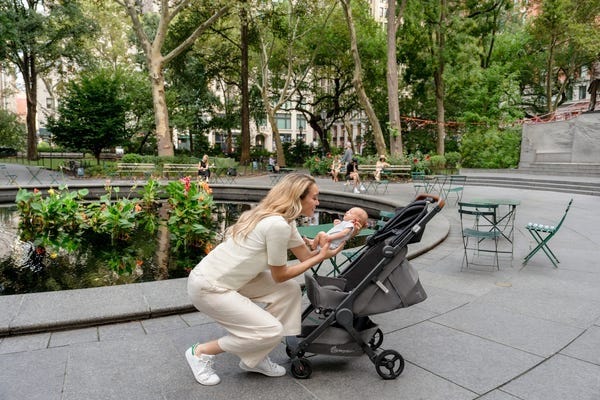

Advantages of Using Strollers for Nature Adventures
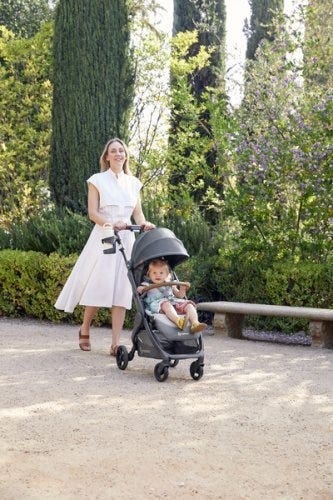

While baby carriers are fantastic for mobility and closeness, depending on the adventure of choice you might want to be a stroller along too.
There are a LOT of baby stroller options on the market. So we understand how confusing it can be to choose the one that’s right for your family. Not only are there a variety of brands, but a variety of strollers that serve different purposes.
There are a few types of strollers on the market:
- Full-sized stroller: This is typically the stroller parents thing of buying for all its versatility.
- Lightweight or umbrella stroller:These compact strollers are perfect for on-the-go adventures.
- Jogging stroller: Designed for parents who want to combine fitness with outdoor adventures.
- Double stroller: Designed for parents with multiple kids, especially twins.
- Car seat carrier: These strollers connect to a specific car seat. We don't typically recommend these as they can be unsafe for baby and uncomfortable for parents who are pushing.
Learn more about the types of strollers and which one would be best for you.
Benefits of Bringing a Stroller
- Storage Space for Gear: Ample room for carrying all your essentials like a diaper bag, beach toys and more.
- Shade and Weather Protection: Built-in canopies to shield your baby from the sun when they are lounging.
- Options: If you have more than one kid, you can stroll with one and carry the other. Or, if you’re getting warm or your little one is getting fussy, you can switch up their position from stroller to carrier or vice versa.
Safety Tips for Strollers
- Ensure your stroller is in good working condition. Make sure buckles are still buckling and that there are no rips or holes that could compromise your baby’s safety.
- Use sunshades or bug nets to protect your little one’s skin.
- Securing the baby properly: always buckle up your baby for safety even if you think they are old enough to go without the buckle.
Combining Baby Carriers and Strollers
For the ultimate flexibility, consider using both a baby carrier and a stroller on your outings.
Combining both options allows you to adapt to different situations. Use the carrier for more rugged trails and switch to the stroller for smoother paths or when your baby needs a nap.
Transition Tips
- Smooth Transitions: Plan stops where you can easily switch from carrier to stroller.
- Pack Light: Only bring essentials to make transitions easier.
Tips for a Successful Adventure
Planning Ahead
- Route Planning: Choose baby-friendly trails and parks. Check local mom groups or outdoor groups and get recommendations for the best outings for kids.
- Check Weather Conditions: Avoid extreme heat or unpredictable weather. Even with our most breathable carriers, when it’s hot, it’s hot. And having two bodies against each other in the heat will be naturally hot and sticky already.
- Packing Checklist: Include diapers, snacks, water, sunscreen, and a first-aid kit. These all-position carriers have storage pockets where you can fit some of the items easily!
- Stay Hydrated and Nourished: Pack healthy snacks to keep energy levels up and bring plenty of water for both you and baby.
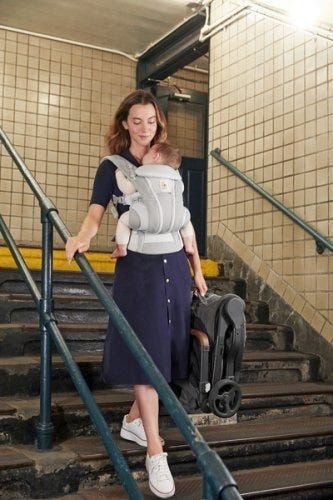

Summer adventures with your baby are a wonderful way to create lasting memories and enjoy the beauty of nature together. From baby carriers to strollers, Ergobaby products are designed to provide comfort and ease for both you and your little one. So, gear up, get outside, and explore the world with your baby by your side.
Ready to embark on your own summer adventures? Check out Ergobaby’s range of baby carriers and strollers to find the perfect match for your family’s needs. Visit our website today and start planning your next outdoor excursion!





